Service 暴露服务
概述
Kubernetes Service 定义了这样一种抽象:一个 Pod 的逻辑分组,一种可以访问它们的策略 -- 通常称为微服务。这一组 Pod 能被 Service 访问到,通常是通过 Label Selector。
核心迭代
在 Kubernetes 集群中,每个 Node 运行一个 kube-proxy 进程。kube-proxy 负责为 Service 实现了一种 VIP(虚拟 IP)的形式
- 在
Kubernetes v1.0版本,代理完全在userspace。
- 在
Kubernetes v1.1版本,新增了iptables代理, 但并不是默认的运行模式。 - 从
Kubernetes v1.2起,默认就是iptables代理。
- 在
Kubernetes v1.8.0-beta.0中,添加了ipvs代理。
工作模式及使用
类型
ClusterIp:默认类型,自动分配一个仅Cluster内部可以访问的虚拟IPNodePort:在clusterIP基础上为Service在每台机器上绑定一个端口,这样就可以通过<NodeIP>NodePort来访问该服务LoadBalancer:在NodePort的基础上,借助cloudprovider创建一个外部负载均衡器,并将请求转发到<NodeIP>:NodePortExternalName:把集群外部的服务引入到集群内部来,在集群内部直接使用。没有任何类型代理被创建(这只有kubernetes1.7或更高版本的kube-dns才支持)
ClusterIP
结构
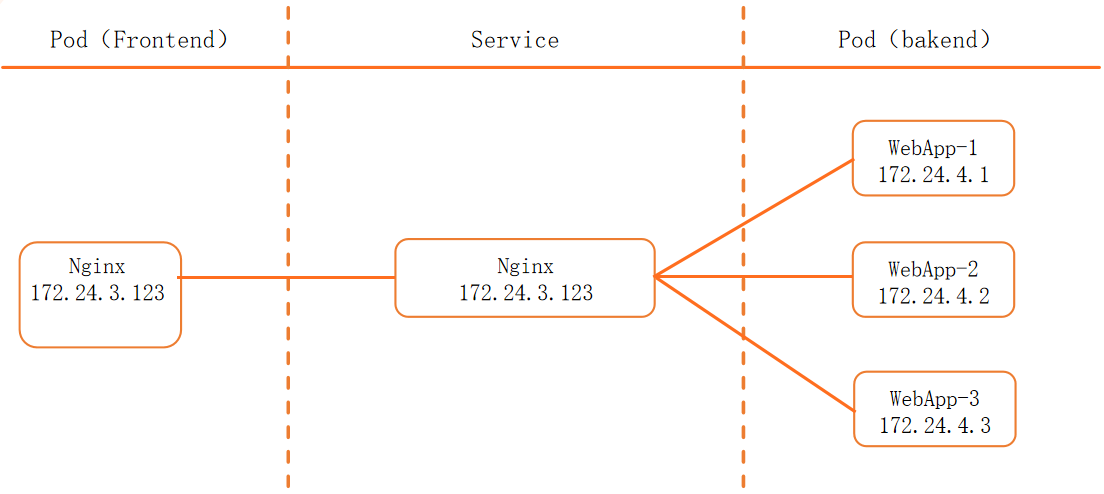
tip
- ipvs 工作模式:
- NAT
- DR
- TUN
-
svc 选中
Pod的逻辑:pod处于就绪状态pod的标签是svc的集合(同一名字空间下)
-
svc dns域名svcName.nsName.svc.domainName.(末尾的 . 代表根域)domainNamecluster.local.
-
svc.spec.internalTrafficPolicyCluster集群的内部都可以Local仅集群内部pod
ClusterIP
创建 myapp-deploy.yaml 文件
apiVersion: apps/v1
kind: Deployment
metadata:
name: myapp-clusterip-deploy
namespace: default
spec:
replicas: 3
selector:
matchLabels:
app: myapp
release: stabel
svc: clusterip
template:
metadata:
labels:
app: myapp
release: stabel
env: test
svc: clusterip
spec:
containers:
- name: myapp-container
image: wangyanglinux/myapp:v1.0
imagePullPolicy: IfNotPresent
ports:
- name: http
containerPort: 80
# 以下仅为使用 pod 生命周期
readinessProbe:
httpGet:
port: 80
path: /index1.html
initialDelaySeconds: 1
periodSeconds: 3
创建 Service 信息
apiVersion: v1
kind: Service
metadata:
name: myapp-clusterip
namespace: default
spec:
type: ClusterIP
selector:
app: myapp
release: stabel
svc: clusterip
ports:
- name: http
port: 80
targetPort: 80
- 会话保持(IPVS 持久化连接)(https应用)
service.spec.sessionAffinity: ClientIP
NodePort
结构

NodePort
创建 myapp-deploy.yaml 文件
apiVersion: apps/v1
kind: Deployment
metadata:
name: myapp-nodeport-deploy
namespace: default
spec:
replicas: 3
selector:
matchLabels:
app: myapp
release: stabel
svc: nodeport
template:
metadata:
labels:
app: myapp
release: stabel
env: test
svc: nodeport
spec:
containers:
- name: myapp-container
image: wangyanglinux/myapp:v1.0
imagePullPolicy: IfNotPresent
ports:
- name: http
containerPort: 80
创建 Service �信息
apiVersion: v1
kind: Service
metadata:
name: myapp-nodeport
namespace: default
spec:
type: NodePort
selector:
app: myapp
release: stabel
svc: nodeport
ports:
- name: http
port: 80
targetPort: 80
nodePort: 30010
LoadBalancer
结构
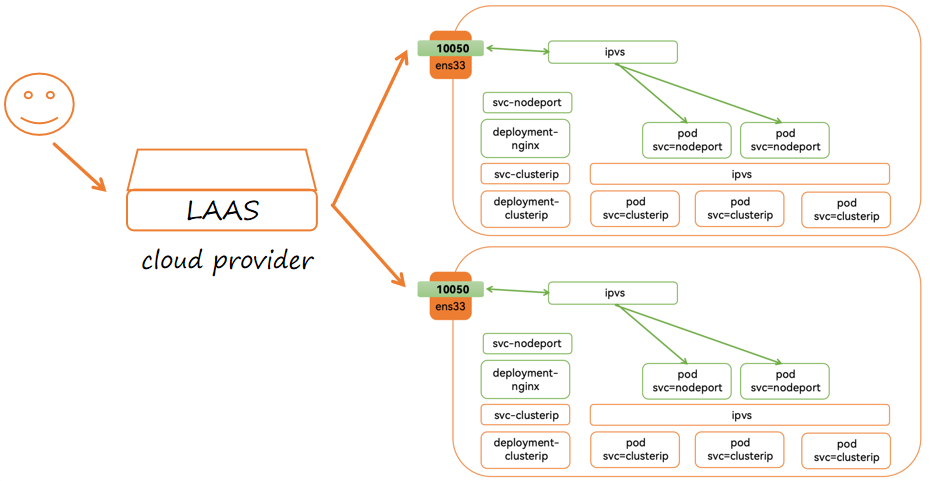
tip
此类型适用于云环境中商家提供的 LoadBalancer
ExternalName
结构
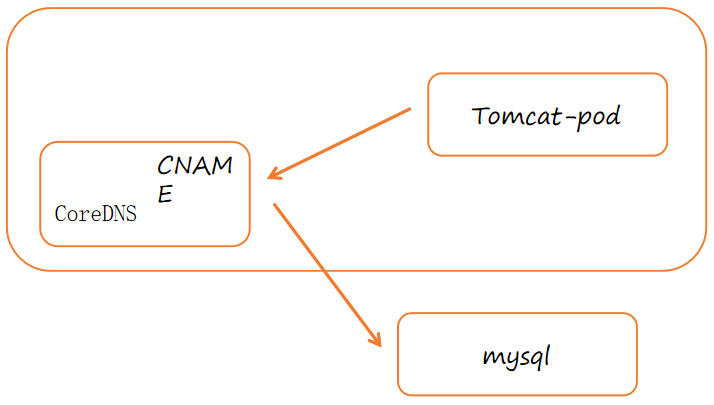
ExternalName Service是Service的特例,它没有selector,也没有定义任何的端口和Endpoint。相反的,对于运行在集群外部的服务,它通过返回该外部服务的别名这种方式来提供服务。
ExternalName
apiVersion: v1
kind: ExternalName
metadata:
name: my-service-1
namespace: default
spec:
type: ExternalName
externalName: www.baidu.com
EndPoints
与 Service 和 Pod 直接的关联
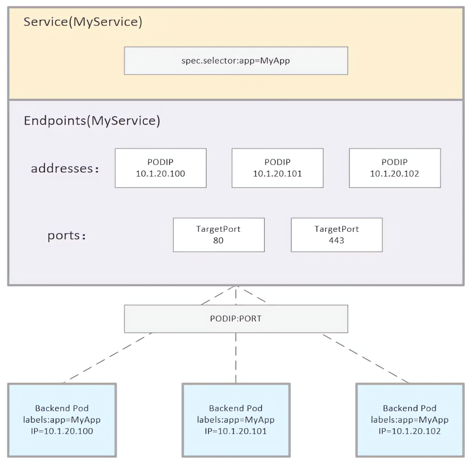
概述
Kubernetes 中的 Service,它定义了一组 Pods 的逻辑集合和个用于访问它们的策略。一个 Service 的日标 Pod 集合通常是由 LabelSelector 来决定的。
Endpoints 是一组实际服务的端点集合。一个 Endpoint 是一个可被访问的服务端点,即一个状态为 running 的 pod 的可访问端点。一般 Pod 都不是一个独立存在,所以一组 Pod 的端点合在一起称为 EndPoints。只有被 ServiceSelector 匹配选中并且状态为 Running 的才会被加入到和 Service 同名的 Endpoints 中。
- 关联体系:
- 自动:配置
selector - 手动:无配置
selector
- 自动:配置
自动关联体系:配置 selector
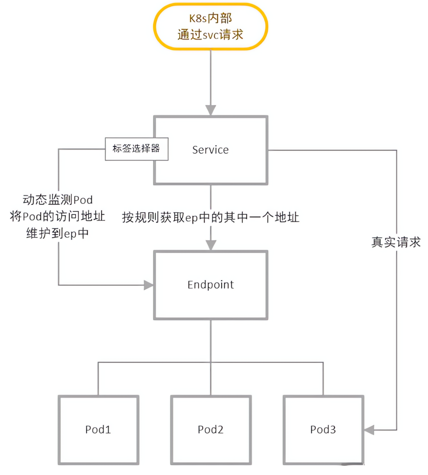
手动关联体系:无配置 selector
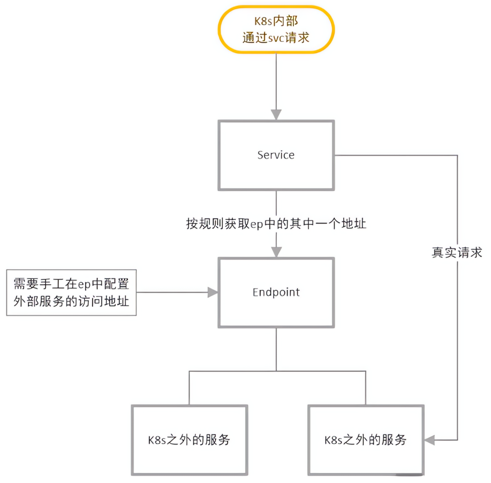
publishNotReadyAddresses
让未就绪的 Pod 也能被 Service 捕获
添加 publishNotReadyAddresses: true
kubectl patch service myapp -p '{"spec":{"publishNotReadyAddresses": true}}'